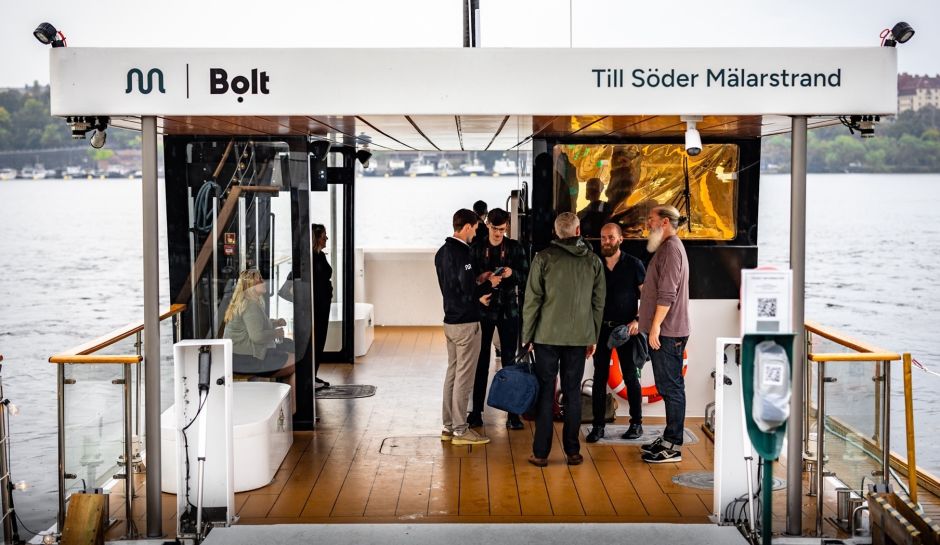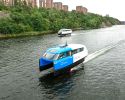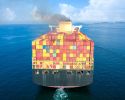Ferry Controlled from Norway Sailed Across Riddarfjärden in Stockholm

Smaller electrified passenger ferries controlled from land could be a climate-smart and efficient alternative to bridges and roads. In a project funded by the Swedish Transport Administration, such a concept has been successfully tested on the MF Estelle, which autonomously crossed Riddarfjärden in Stockholm.
Urban waterways could become a key to making cities more attractive and reducing the pressure on an already overloaded land-based infrastructure. A concrete example of this is small, smart electric ferries that not only enable pedestrians and cyclists to quickly travel between districts but also provide a more climate-friendly alternative than the construction of new bridges and roads.
"In a world where it is difficult to recruit skilled personnel for shipping, autonomous functions could also be a way to complement the crew requirements in the future. It’s not necessarily about removing personnel, but it could also be about what kind of skills the crew on board needs to have", says Håkan Burden, researcher at RISE and one of the authors of the report Policy Lab Urban Shipping: Testing Smart Vessels on Swedish Waters.
Despite progress with autonomous vehicles on land, the development of autonomous ships has been slower. Uncertainty around regulations and safety has been a barrier. To overcome this, two tests with the smart vessel MF Estelle have been conducted in Stockholm, in accordance with the Swedish Transport Agency's guidelines for testing smart vessels, and each test included a detailed safety argumentation outlining risks and action plans. In addition to RISE, Zeabuz, Torghatten, Port of Stockholm, and DNV participated in the project.
"We have looked at the existing regulatory framework in Sweden to see if we can start exploring the technology now, before the IMO’s regulations for smart vessels are in place. Our goal has not been to get Estelle to operate Riddarfjärden without a crew, but rather to understand the possibilities and what is reasonable from a business perspective. For an operator like Torghatten, which currently has maybe five crew members on some ferries, this could mean that if the technology works and is safe, they might be able to reduce the crew requirements to four people", says Håkan Burden.
But it wasn’t just about testing the technology – it was also important for the project to engage in dialogue with the Swedish Transport Agency.
"If we are to have a functioning market, where all parties have a shared understanding of what is reasonable, the authority responsible for supervising ferries and maritime traffic must be involved in the research. The authority must also be at the forefront and not just work to catch up with the technology. That’s why we chose to actively involve the Swedish Transport Agency by making the world’s first notification for testing a smart vessel on Swedish waters", says Håkan Burden.
He continues:
"This way, they knew what we wanted to achieve with the tests, what risks we identified, how we planned to manage them, and they could also participate in the tests and see the safety work in relation to the technology in real life."
The first test focused on the technology and was conducted locally on Estelle, where the wired transmission of steering signals from the wheelhouse to the engine room was replaced with wireless transmission via 5G. The goal was to ensure if it was safe and reliable, as well as to explore the potential for future remote monitoring from a remote operations center (ROC).
"The test went so well that we decided to also test remote monitoring. In our second notification to the Swedish Transport Agency, we described that we wanted to test if we could remotely monitor and control Estelle across Riddarfjärden from Trondheim. And it worked!"
So, what’s the next step?
"We would like to further investigate the conditions for obtaining a crew decision that allows part of the competence to be located at a remote monitoring station while some remain on board. How do you develop the foundation for such a decision, and what is needed for the Swedish Transport Agency to be able to make a decision on it? It would be good to get that on the agenda. The certification issue is also important. Estelle is certified as a vessel, but how do you determine that the entire system, including the remote monitoring station on land, is product-safe? That’s something we would also like to explore", says Håkan Burden.
The report Policy Lab Urban Zjöfart: Test av smarta fartyg på svenska vatten is authored by Håkan Burden och Susanne Stenberg (båda RISE) in cooperation with Erik Nilsson (Torghatten) och Carl Petersson (Zeabuz).
-
 NextWave – en podd som ska locka unga
NextWave – en podd som ska locka unga -
 Ny studie: Eldrivna pendelbåtar kan effektivisera Stockholms kollektivtrafik
Ny studie: Eldrivna pendelbåtar kan effektivisera Stockholms kollektivtrafik -
 Sjöfartens utsläpp ökar
Sjöfartens utsläpp ökar -
 Sociala relationer påverkar val av bränsle
Sociala relationer påverkar val av bränsle -
 Sjöfartens omställning kräver ”mjukare” påtryckningar
Sjöfartens omställning kräver ”mjukare” påtryckningar -
 Hon hade avtalad tid med Kapten ynkrygg
Hon hade avtalad tid med Kapten ynkrygg -
 Lighthouse omvärldsanalys 2025 – osäkerhet och tullar präglar sjöfarten
Lighthouse omvärldsanalys 2025 – osäkerhet och tullar präglar sjöfarten -
 Se seminariet Shipping in the Marine Environment
Se seminariet Shipping in the Marine Environment -
 Vad betyder egentligen de 90 procenten?
Vad betyder egentligen de 90 procenten? -
 Hålla där...
Hålla där...

